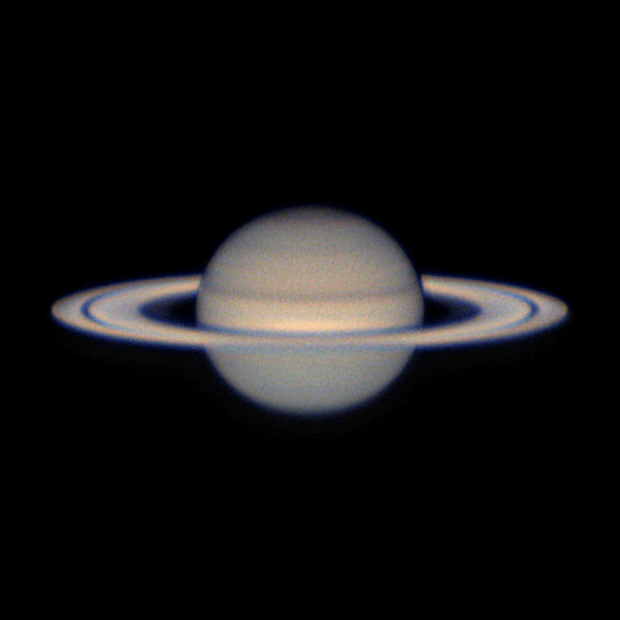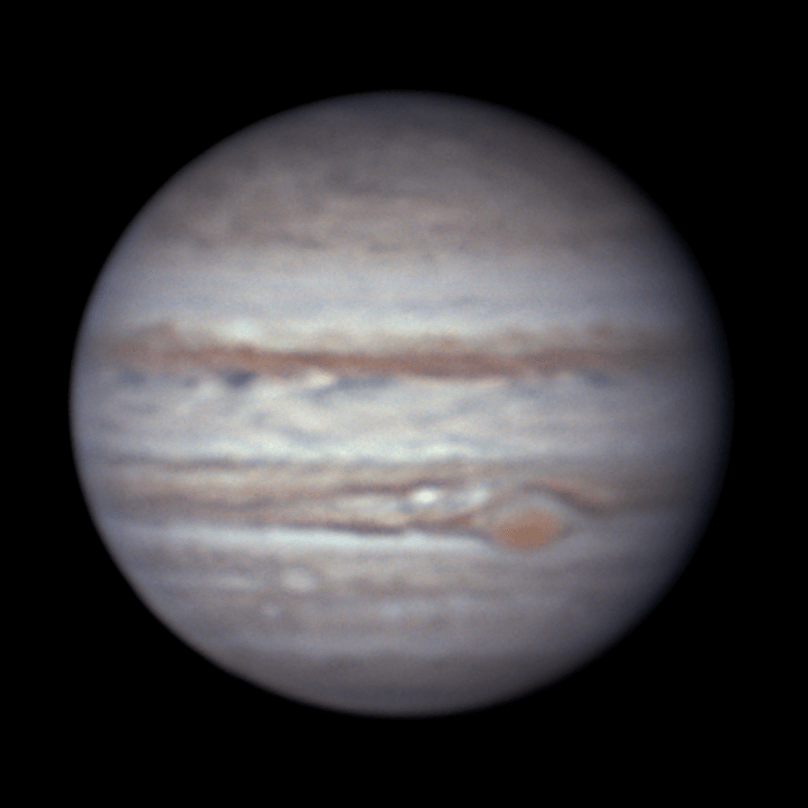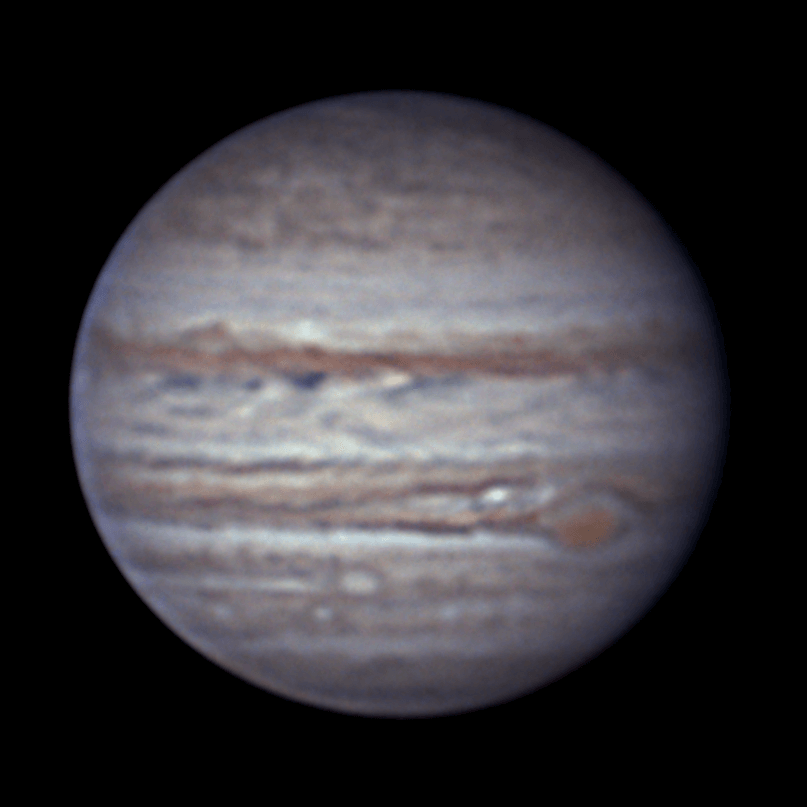Saturn and Jupiter, 2023-08-17
Saturn was 1.313 x 109 km from Earth at the time of these images. The axis of rotation for Saturn is tilted 26.7° relative to the plane of its orbit, and its rings are inclined at the same angle. Because Earth's axis is tipped 23.5° relative to its orbit around the Sun, we experience seasons. Seasons on Saturn come with an added bonus -- the views of the rings change over the span of its 29.4 year orbit. When Saturn's north pole is pointing the most toward the Sun that it can, the view from Earth shows the rings as wide open, and we get a look at the hexagon in Saturn's atmosphere above its north pole. In 2023, Saturn is moving toward what would be autumn in its northern hemisphere. This means the rings appear narrower to us here on Earth. If you observe Saturn in 2025, it will appear not to have rings. The plane of its rings will be pointing directly at the Sun, making them invisible. For now, enjoy this view of its rings. And don't worry -- they'll come back into view in 2026 as Saturn's southern hemisphere gets exposed to the light of the Sun more directly.

NASA's Solar System Exploration page for Saturn has even more information about the giant planet.
Jupiter was 7.03 x 108 km from Earth during this imaging session.

The image above was uploaded to the JunoCam website: 2023-08-17 10:35 UTC

The image above was uploaded to the JunoCam website: 2023-08-17 10:57 UTC

Stay Connected